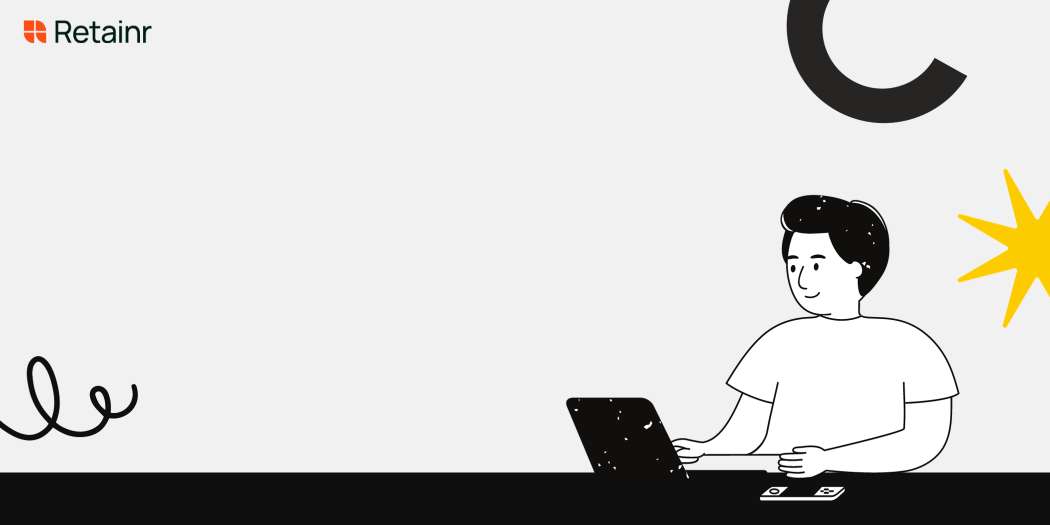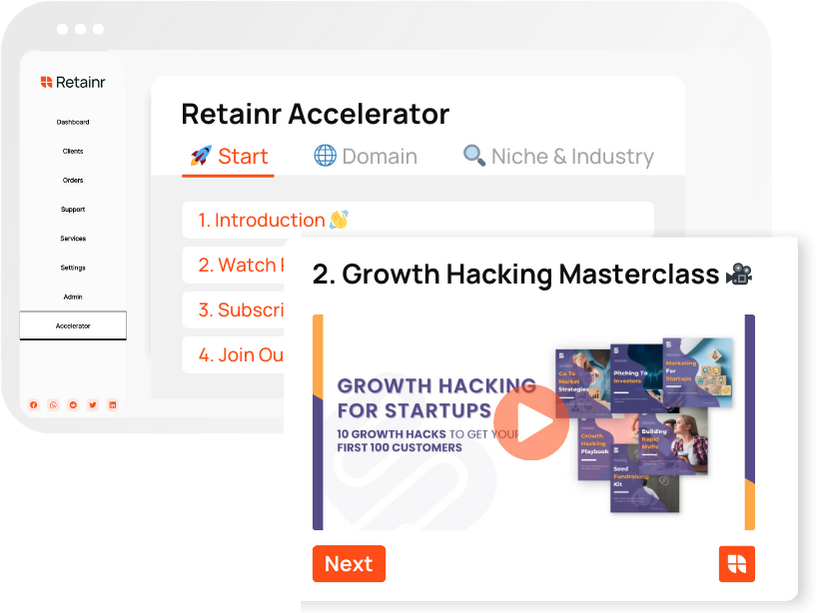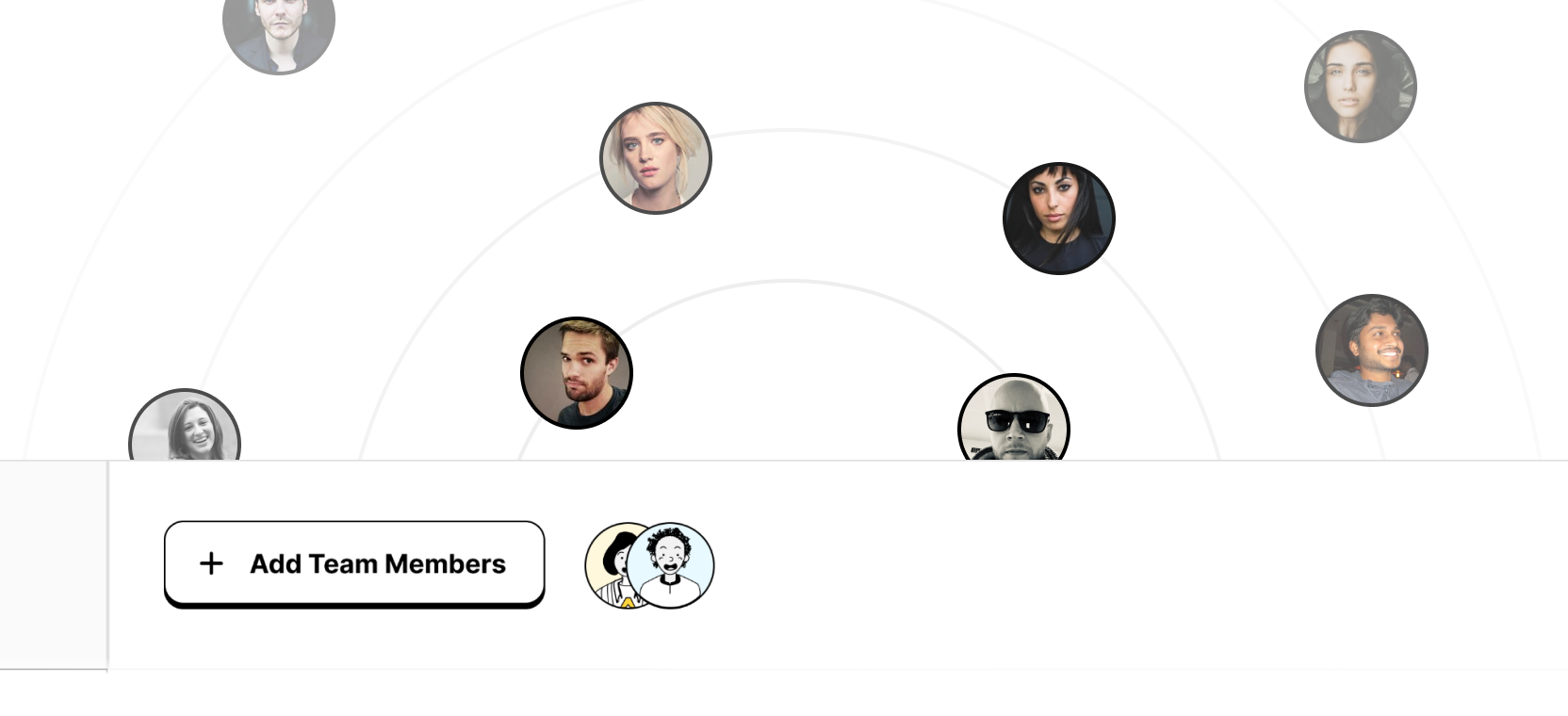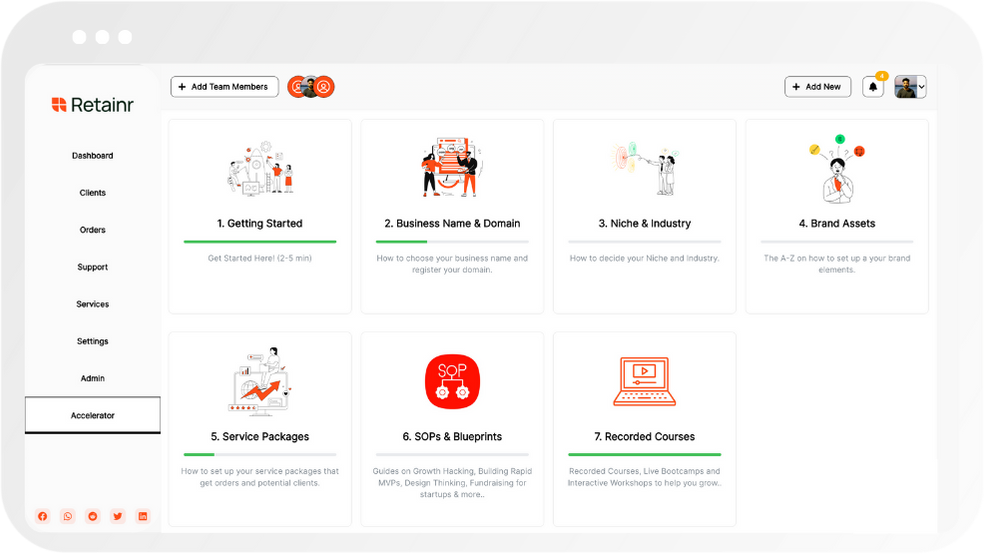
8 Tips and Tricks for Successful Social Media Management in Agencies
Build with Retainr
Sell your products and services, manage clients, orders, payments, automate your client onboarding and management with your own branded web application.
Get Started1. What are the top 8 Tips and Tricks for successful social media management in agencies?
Understanding the Core Tips and Tricks
Effective social media management requires a blend of professional knowledge, some in-depth understanding of unique industry trends and the ability to creatively engage your audiences. The top eight tips for successful social media management in agencies are:
- Creating a comprehensive social media strategy
- Adopting automating tools for posting and scheduling
- Focusing on content that drives engagement
- Regularly analyzing performance metrics
- Staying updated with the latest trends and updates
- Avoiding generic answers, personalizing responses
- Maintaining consistent brand voice and image across platforms
- Effective audience targeting and retargeting
Breaking Down Each Tip
Following these eight tips can greatly improve social media management success in agencies. Each of these tips have specific benefits for the management process.
| Tip | Benefits |
|---|---|
| Creating a comprehensive social media strategy | Lays a clear roadmap for all social media activities |
| Adopting automating tools for posting and scheduling | Helps in better time management and improves consistency |
| Focusing on content that drives engagement | Promotes better audience interaction and helps in better brand building |
| Regularly analyzing performance metrics | Helps in understanding what works and what doesn't |
| Staying updated with the latest trends | Keeps the content relevant and relatable for the audience |
| Avoiding generic answers, personalizing responses | Improves audience's trust and loyalty |
| Maintaining consistent brand voice and image | Strengthens brand recognition |
| Effective audience targeting and retargeting | Increases chances of lead conversion and better ROI |
Incorporating the Tips into Your Strategy
Each of these tips plays a significant role in shaping an efficient social media management strategy. It's crucial to consider each while formulating the strategy and to continuously revisit these to ensure that your agency stays on top of its social media game. Remember, social media management isn't a one-time task, but a continuous effort. The more you stay updated and active, the better your results will be.
2. How can agencies improve their social media management?
Utilize Planning Tools
Planning tools are essential for improving the efficiency and effectiveness of social media management. These can be used to schedule content release, track user engagement, and collect crucial analytics data. Some popular tools include Hootsuite, Buffer, and Sprout Social. Additionally, a content calendar is another useful tool that can help agencies plan and schedule their social media posts in bulk. This allows them to have a clear overview of their content strategy and make necessary adjustments as needed.
Use of Engaging Content
Engaging content is crucial for successful social media management. To improve, agencies can:
- Frequently conduct social media audits to ensure that their content aligns with their brand image.
- Optimize their use of visuals and catchy headlines to attract more attention.
- Incorporate interactive content (e.g. polls, quizzes, etc.) to increase user engagement.
- Regularly analyze performance metrics to gain insights into what types of content resonate most with their audience.
Moreover, agencies should not underestimate the power of user-generated content. Encouraging followers to share their own experiences or reviews can significantly improve engagement and foster a sense of community.
Customer Interaction and Feedback
| Strategy | Description |
|---|---|
| Quick Response | Agencies can greatly improve their social media management by responding promptly to comments and inquiries. This fosters a sense of community and trust among followers. |
| Listen to feedback | Feedback, both positive and negative, can provide valuable insights into areas that need improvement. Actively seeking feedback and demonstrating a willingness to act on it can greatly enhance an agency's reputation. |
| Personalized Interactions | Personalizing interactions as much as possible can help agencies build stronger relationships with their followers. This means addressing users by name, understanding their individual needs, and providing tailored responses. |
3. What role does content scheduling play in successful social media management?
The Significance of Content Scheduling in Social Media Management
Content scheduling is a crucial element in successful social media management. It helps in systematically arranging, organizing and publishing content across various social media platforms. This strategic approach is beneficial as it enables agencies to post content during peak engagement times, ensuring that their posts reach the maximum number of users. Moreover, content scheduling also prevents content gaps and aids in regular engagement with the audience, creating a consistent online presence.
Benefits of Content Scheduling
- Consistent Engagement: By having your content scheduled in advance, agencies can maintain an active social media presence that engages with users regularly.
- Focused Content: Content scheduling helps to strategize and systematize the content in advance, lining it up with relevant timings and trending topics.
- Improved Efficiency: Agencies can manage their time more efficiently by scheduling posts in advance, freeing up resources to focus on other core operations.
- Optimized Reach: Scheduling enables posting during optimal times ensuring the content reaches the maximum audience.
Content Scheduling Tools Comparison
| Tool | User-Friendliness | Features | Price |
|---|---|---|---|
| Hootsuite | High | Scheduling, Monitoring, Analytics | Free Plan / Premium Starting at $19/month |
| Buffer | Medium | Scheduling, Analytics, Team Collaboration | Free Plan / Premium Starting at $15/month |
| Sprout Social | High | Scheduling, Monitoring, Reporting | Premium Starting at $99/month |
4. How important is audience engagement in managing social media for agencies?
The Critical Role of Audience Engagement in Social Media Management for Agencies
Understanding and acknowledging the importance of audience engagement is crucial in successful social media management for agencies. Engagement refers not only to likes and shares but meaningful interactions such as comments, direct messages, and mentions. Active involvement with your audience can amplify reach, deepen customer trust, and drive more traffic, ultimately leading to higher ROI.
- Increase Brand Loyalty: By engaging with your audience, responding to their questions, or even starting a conversation, a stronger bond can be built, leading to higher brand loyalty.
- Improve Brand Visibility: When your audience actively engages with your content, it becomes more visible to others, given the algorithms used by social media platforms.
- Drive More Traffic: Engaged users are more likely to visit your website, offering opportunities for lead conversion and sales.
Engagement Metrics to Focus On
Engagement doesn’t only mean growing followers; it extends to monitoring and analyzing metrics that offer real insights. It involves active listening and social media monitoring. Below table shows a few key metrics:
| Metric | Why It's Important |
|---|---|
| Shares/Retweets | This shows how valuable your content is to your audience well enough that they are willing share it in their circles. |
| Comments/Replies | This represents people’s readiness to interact with your brand, invaluable feedback, and opportunities to connect directly. |
| Saves | Reflects that your audience finds your content relevant and wants to return to it later. This can be a strong signal to prioritize similar content. |
5. How can agencies identify and analyze their target audience for social media?
Identifying the Target Audience
Identifying the target audience is the foundation of an effective social media strategy. Start by defining the ideal customer profile. This includes demographics like age, gender, location, and occupation. Moreover, delve into their interests, behaviors, and preferences. Leveraging analytics tools on social media platforms can help gather this data. Performing surveys and studying competitors are also insightful methods. Perhaps, creating buyer personas can be useful to depict different segments of your audience.
Analyzing the Target Audience
Upon identifying the target audience, it’s time to analyze their behavior. First, dissect their online activities. Examine when they are most active, the kind of posts they engage with, the hashtags they use, and the accounts they follow. Second, monitor their engagement with your content. Track likes, shares, comments, and mentions. These metrics offer valuable insights into what resonates with your audience.
| Metric | What It Measures | Why It’s Important |
|---|---|---|
| Likes | Number of people who like your posts | Measures how well your content is received |
| Shares | Number of times your posts are shared | Indicates the shareability factor of your posts |
| Comments | Number of comments on your posts | Provides a glimpse into audience’s thoughts, opinions and interaction level |
| Mentions | Number of times your brand is mentioned on social media | Helps measure brand awareness and reputation |
Continuously Evolve Strategy
Identifying and analyzing your target audience is not a one-time task. It requires continuous observation and adaptation. Keep an eye on changes in behavior and preferences. Adjust your strategy to align with these modifications. Flexibility and adaptability will ensure your social media strategy remains effective despite shifts within your target audience. Utilize the following tactics:
- Regularly update buyer personas
- Experiment with different types of content
- Engage directly with followers through comments or direct messages
- Measure, analyze, and refine your strategy based on performance metrics
6. How can metrics and analytics help improve social media management in agencies?
Understanding Metrics and Analytics
The role of metrics and analytics in the successful management of social media is profound. These tools help agencies understand user behavior, identify trends, and make strategic decisions. Metrics such as likes, shares, comments, retweets, and follower growth rate provide immediate feedback, while analytics go deeper to measure engagement, reach, demographics, and influence. Moreover, social media metrics track return on investment (ROI) and indicate if a campaign or strategy is working or not. To better understand, here are vital metrics you should keep tabs on:
- Engagement: This refers to likes, shares, comments and other interactions with your content.
- Reach: The number of unique users who viewed your post.
- Impressions: The total number of times your post was seen.
- Follower Growth: The number of new followers over a specific timeframe.
- Website Clicks: The number of times users clicked on the link to your website.
- Conversion Rate: The percentage of users who completed a desired action, such as making a purchase.
Using Analytics to Boost Performance
By leveraging analytics, agencies can enhance their social media management. They allow you to examine what kind of content resonates with your audience, determine the best time to post, identify who your audience is, and ascertain the social platforms that yield the most engagement. Furthermore, they expose the effectiveness of your social media ad campaigns. />
| Benefit | Description |
|---|---|
| Identify Successful Content | Discover which type of content consistently yields high engagement. |
| Optimize Posting Schedule | Establish the times and days when your audience is most active. |
| Determine Audience Demographics | Pinpoint the age, location, gender and interests of your audience. |
| Evaluate Social Platforms | Ascertain which social media platforms generate the most returns. |
| Assess Ad Campaigns | Determine the success of your ad campaigns and adjust as needed. |
Improving Social Media Management with Metrics and Analytics
In conclusion, metrics and analytics provide a wealth of information that can greatly improve your social media management. They help you to track your own progress and compare your results with competitors. They enable you to adjust your strategy in real-time based on reliable data, rather than relying on guesswork. In a digital landscape where trends constantly evolve, metrics and analytics serve as the compass to guide your social media strategy.
7. What is the importance of diversifying social media content for successful management?
The Importance of Diversifying Social Media Content
Diversifying social media content is pivotal for successful management, mainly because it significantly improves audience engagement and prevents content fatigue. When the content is diverse and engaging, it increases the chances of retaining the audience’s interest and drawing in new followers.
- Improves Audience Engagement: Different types of content appeal to different people. By diversifying the content, a wider audience is reached and engaged. The more engaged the audience is, the greater the chances of conversions and achieving the set objectives.
- Prevents Content Fatigue: Posting the same types of content repeatedly can lead to content fatigue, resulting in a decrease in engagement levels. Differentiating the content helps to keep it fresh and interesting for the audience.
- Attracts New Followers: Diversified content enhances the chances of attracting new followers because it resonates with a larger audience. It exposes the brand to different demographics that it may not have reached with only one type of content.
Examples of Diversified Social Media Content
There are numerous ways to diversify social media content. Including a mix of these in your social media strategy will keep your audiences engaged and interested.
| Type of Content | Purpose |
|---|---|
| Informative Blogs and Articles | Establishes the brand as a thought-leader in its field. |
| Infographics and Charts | Presents complex information in an easily digestible format. |
| Videos and Webinars | Engages the audience visually and auditory, offering a more interactive experience. |
| User-Generated Content | Helps build trust and advocacy by showing real-life experiences of customers. |
| Behind-The-Scenes or Team Photos | Humanizes the brand by showing the people behind it. |
| Contests and Giveaways | Boosts engagement and increases audience size by encouraging user participation. |
8. Why is understanding and staying updated with social media trends crucial for agencies?
Understanding Social Media Trends
Understanding and staying updated with social media trends is crucial for agencies. It helps determine and take advantage of the appropriate marketing strategies that can connect with the target audience at a personal level. Furthermore, it helps agencies to identify new tools, strategies, algorithms and even new platforms that could be useful in reaching out to their targeted audience.
- By knowing the latest social media trends, agencies would be able to adapt their strategies, helping them to engage with their audience more effectively.
- Trends provide agencies with insights into the behaviour and preferences of social media users, allowing for more successful and impactful campaigns.
- Staying updated with trends equips agencies with the knowledge to foresee future shifts in the digital marketing landscape, which can influence events, product launches, and campaign planning.
The Necessity of Staying Updated
Staying updated with social media trends is equally critical as it allows agencies to stay competitive and relevant in the fast-paced world of social media. Such awareness is no longer a luxury but an essential component of effective social media management.
| Benefits | Explanation |
|---|---|
| Engagement boost | Trends often generate a lot of buzz and engagement. Participating in these trends can increase overall engagement with the audience. |
| Stay competitive | Agencies who are updated have a competitive advantage. They are abreast of new algorithms, tools, and strategies that rivals may be unaware of. |
| Maximize ROI | Employing trending tactics can maximize the agencies' investment on social media platforms by optimizing their approach. |
Impact of Not Understanding Social Media Trends
Alternatively, not understanding or staying updated with social media trends can lead to missed opportunities and decreased audience interaction. In such a rapidly changing field, lagging behind can have severe repercussions.
- If agencies are not updated with the latest algorithms, they can experience a severe fall in their organic reach.
- Lacking knowledge on emerging platforms could lead to agencies missing out on being the first movers, losing them potential engagement and followers.
- Without the understanding of the latest content trends, agencies risk creating content that is stale and uninteresting to the audience, leading to less engagement.
9. How can agencies properly handle negative comments or criticism on social media?
Strategies for Handling Negative Comments on Social Media
Agencies can effectively manage negative comments or criticism on social media through robust strategies. These involve monitoring, response and final step of resolution. The first approach is to always stay updated with all social media channels to identify negative comments promptly. This requires the agency to monitor all social feed round the clock, which can be facilitated by using social media management tools that send you notifications when your brand is mentioned.
- Monitor: Use social media management tools to continually listen to your social media channels for brand mentions and comments.
- Respond: Next, an effective response is necessary. Avoid defensive reactions. Instead, respond with empathy, open-mindedness and a genuine effort to resolve the issue at hand.
- Resolve: It may be necessary to take the conversation offline or to a private channel in order to deeply understand and resolve the issue.
Framework for Responding to Negative Comments
It's crucial to bear in mind that not all negative comments are created equal. Each deserves a unique, well thought-out response. Agencies can use a table-like format to craft responses based on the severity and type of comment. This can help standardize the process whilst ensuring every comment is addressed suitably.
| Severity / Type of Comment | Response Strategy |
|---|---|
| Mild criticism / Non-threatening | Direct response on the platform with apologies and solution |
| Harsh criticism / Hate speech | Engage privately, report to platform |
| False information / Trolling | Correct politely in public to avoid misinformation spread |
Importance of Learnings from Negative Comments
Finally, every bit of negative feedback is a chance to learn and grow. Agencies shouldn't look at them merely as problems, but as opportunities to improve. Some potential learning points could be about improving customer service, product enhancements or better communication. These insights can be invaluable in strengthening the agency's offerings.
- Customer Service: A common complaint could point towards the need for improved customer service.
- Product Enhancements: Negative comments could lead to discovering areas of your product that need enhancement.
- Communication: If a negative comment centres around misunderstanding, it might mean your agency needs to improve its communication strategy.
10. What are some effective strategies for team collaboration in managing an agency's social media?
Setting up and Streamlining Group Operations
An effective way to foster team collaboration in social media management is by setting up and streamlining group workflows. Here are some strategies:
- Use collaborative tools: Tools like Slack or Trello can be effective for real-time communication, task tracking, and content sharing.
- Schedule regular team meetings: Regular team meetings allow members to discuss projects, share ideas, and address challenges.
- Adopt cloud-based platforms: Cloud-based platforms, such as Google Docs or Shared Drives, foster collaboration by allowing multiple team members to work on a project simultaneously.
Efficient workflows save time, improve communication, and prevent duplication of efforts.
Encourage Skillswaps and Training
Another effective strategy is to utilize the diverse skills within the team through cross-training. Here are some tactics that can be implemented:
- Skillswapping: Members of the team can take turns teaching each other their area of expertise.
- Workshops: Organize internal or external training workshops to upgrade the team's skills.
- Online learning: Encourage team members to take online courses or webinars for continuing education.
Continuous learning fosters a more versatile and adaptable team.
Monitoring and Reporting Metrics
Ensuring a transparent and consistent system of monitoring and reporting is crucial for effective team collaboration. The table below lists some important considerations for this strategy.
| Metric | Why it matters |
|---|---|
| Followers count | Indicates the size of the audience you can reach |
| Engagement rate | Shows how much your audience interacts with your content |
| Conversion rate | Measures how effective your content is at driving desired actions (sign-ups, sales, etc.) |
| Customer satisfaction score | Helps assess whether your audience finds your content valuable |
Regular metric reviews help track progress, make informed decisions, and align team goals.
Conclusion
Master the Art of Social Media Management
Managing social media for various clients and agencies can be daunting. From scheduling posts to observing trends, it requires strategy and attention to detail. Here are 8 key tips to assist you.
1. Prioritize Organization
Stay organized with content calendars and client profiles. Having a clear overview of each client's social media status and scheduled posts is invaluable.
2. Understand Your Clients
Get to know your client's brand, their expectations and audiences. They’ll expect their core message to be conveyed accurately.
3. Quality Over Quantity
Don’t just post for posting's sake. Craft high-quality, engaging content that delivers value to the audience.
4. Leverage Analytics
Use social media data to track performance, identify trends and fine-tune your strategies. Understanding insights can probably redefine your strategy.
5. Promote Engagement
Social media is about conversation. Encourage followers to interact with posts through comments, likes, shares, etc.
6. Monitor Trends
Keeping an eye on digital trends is key in social media management. Missing out can cost opportunities and profits.
7. Address Negative Feedback Professionally
Negative comments will come. Responding professionally can turn a disgruntled follower into a loyal customer.
8. Implement Whitelabel Software
Managing social media campaigns for multiple clients can be streamlined with the help of software like Retainr.io. It is a whitelabel software tailored to sell, manage clients, orders and payments with your own branded app.
Retainr.io: Your Social Media Management Ally
Retainr.io is specifically designed for agencies managing diverse clients. Experience seamless client correspondence, order management, and payments within a single app. With your business' branding, you can boost professionalism and trust. Give Retainr.io a try and upgrade your social media management game.
Boost Your Agency Growth
with Retainr Accelerator
Uncover secrets, strategies, and exclusive blueprints to take your agency's growth to the next level — from marketing insights to effective presentations and leveraging technology.

SOPs, Cheatsheets & Blueprints
Leverage 50+ SOPs (valued over $10K) offering practical guides, scripts, tools, hacks, templates, and cheat sheets to fast-track your startup's growth.
Connect with fellow entrepreneurs, share experiences, and get expert insights within our exclusive Facebook community.
.jpg)

Join a thriving community of growth hackers. Network, collaborate, and learn from like-minded entrepreneurs on a lifelong journey to success.

Gain expertise with recorded Courses, Live Bootcamps and interactive Workshops on topics like growth hacking, copywriting, no-code funnel building, performance marketing and more, taught by seasoned coaches & industry experts.

.jpg)

.jpeg)


